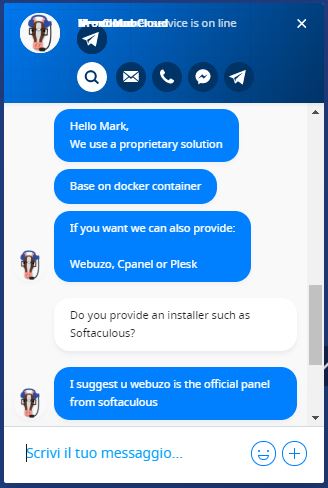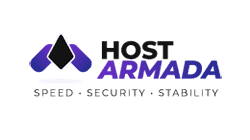Proudly Swiss hosting provider MooCloud has only been operating for a little over a year. It operates servers in Germany and Finland, and it provides cloud hosting, VPS hosting, and dedicated servers.
MooCloud’s English- and Italian-language website (the Italian version is more comprehensive) displays prices in Swiss francs.
Features and Ease of Use
The four shared cloud hosting packages — XS, S, M, and L — range in RAM, CPU, visits-per-hour, email accounts, and email storage. They include these features as standard:
- SSD storage
- Free website builder
- Free SSL certificate
- 99.98% uptime guarantee
- Control panel
- Application installer
- Antivirus
- Spam protection
MooCloud provides its own “Easy Manager” custom control panel that has a user-friendly management interface. You can only use the industry-standard cPanel control panel if you opt for a dedicated server solution instead.
The custom control panel includes a one-click application installer for popular programs such as WordPress, Joomla, PrestaShop, and Nextcloud. However, you’re only able to install one application.
If you’re not comfortable coding a website from scratch, you can use the free Divi Builder website builder that comes with hundreds of ready-made website design layouts that you can customize via a simple drag-and-drop interface.
The shared cloud hosting packages use Docker containers that isolate your website from others on the same server, so you should be secure and get the resources you signed up for.
Pricing and Support
Like many Swiss services, MooCloud’s hosting solutions are expensive, so you may well find more feature-packed European hosting plans at much lower prices.
We offer you the option to choose your billing cycle, whether it’s monthly, semi-annually, or annually, and you can conveniently make payments using credit/debit card, bank transfer, or postal order. We’re pleased to inform you that you will also enjoy a 15-day money-back guarantee, although it’s worth noting that this evaluation period exceeds what many other hosts provide.
If you go looking for self-support resources, your best bet is to view the knowledge base in Italian because it contains more articles than the English version. For one-to-one support, you can contact the customer support team by telephone, ticket, or live chat. I got some good responses to my pre-sales questions via the live chat channel:











